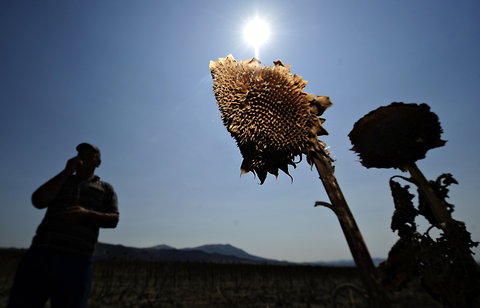Wall Street lacked direction on Tuesday as it awaited the week’s main economic news, and the stock market wandered between slight gains and losses before closing barely higher.
Traders were especially disinclined to make big bets before the Federal Reserve issues its policy statement on Wednesday, which may offer hints about the future of its economic stimulus program. They were also standing pat in anticipation of the government’s initial report on second-quarter economic growth on Wednesday and the July employment report on Friday.
“This week it’s all about Bernanke and the Fed statement,” said Bill Strazzullo, chief strategist of Bell Curve Trading, referring to Ben S. Bernanke, chairman of the central bank. “Stocks need a supportive statement to go higher. That is the key driver.”
To some, the market’s inertia resembled the inactivity typical of mid- to late August, when trading usually dwindles. “It seems like the doldrums of summer have set in,” said Dave Abate, senior wealth adviser at Strategic Wealth Partners.
The Dow Jones industrial average rose as much as 72 points in early trading on Tuesday — less than 0.5 percent — before flickering lower, closing down 1.38 points, or 0.01 percent, at 15,520.59.
The Nasdaq composite index rose 17.33 points, or 0.5 percent, to 3,616.47. But the Nasdaq gained largely because Apple, its largest component, jumped more than 1 percent, rising $5.53, to $453.32.
The Standard Poor’s 500-stock index ended slightly higher, up 0.63 point, or 0.04 percent, to 1,685.96. Its worst performer was Mosaic, a maker of potash, a major ingredient of crop fertilizers, which plunged $9.15, or 17.3 percent, to $43.81 after a Russian fertilizer company said it would drop out of a cartel that keeps potash prices high.
Company earnings provided little guidance. Coach, the maker of luxury handbags, slumped $4.55, or 8 percent, to $53. 30 after reporting a lower quarterly profit. But Goodyear Tire and Rubber jumped $1.52, or 9 percent, to $18.56 after announcing that its quarterly earnings had doubled.
This earnings season has been encouraging on some fronts and troubling on others. Many companies, including big names like Apple and Visa, have posted better-than-expected results, and analysts predicted that second-quarter earnings would be up 4.7 percent for companies in the S. P. 500, according to SP Capital IQ. But many of the gains were based on cost-cutting, not on business growth.
Traders continue to look for clues from the Fed, which began a two-day meeting on Tuesday, about when it might pull back on its bond-buying stimulus program.
The Fed has said it might act this year if the economy continues to improve, but the timing remains uncertain. The central bank has also said it will not raise its benchmark short-term interest rate until the unemployment rate, which was 7.6 percent in June, dips below 6.5 percent.
In the bond market, interest rates were little changed on Tuesday. The price of the benchmark 10-year Treasury note fell 2/32, to 92 21/32. Its yield edged up to 2.61 percent, from 2.60 percent late Monday.

Article source: http://www.nytimes.com/2013/07/31/business/daily-stock-market-activity.html?partner=rss&emc=rss


